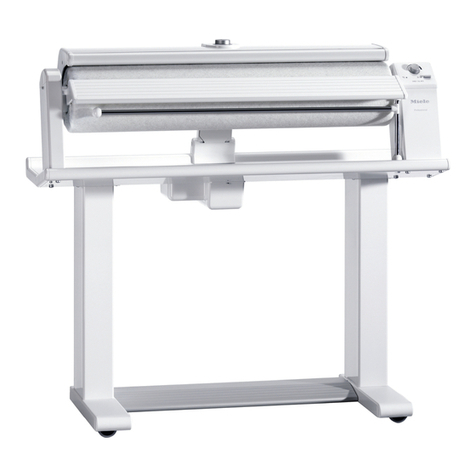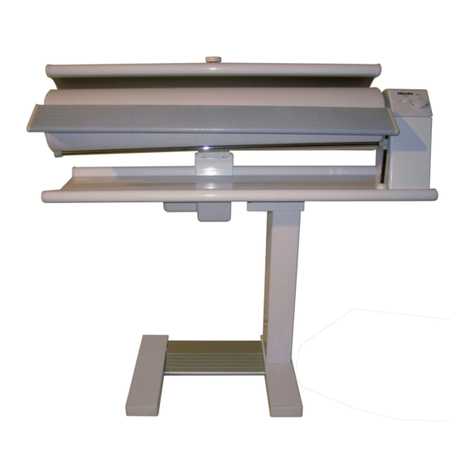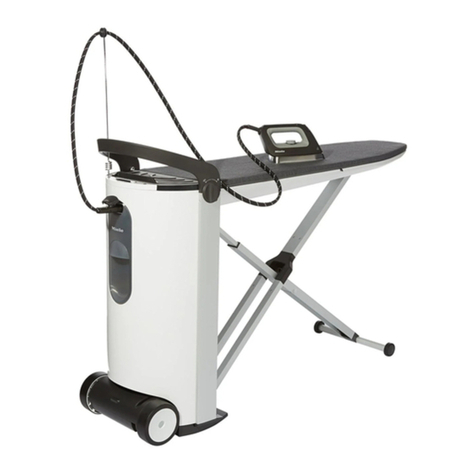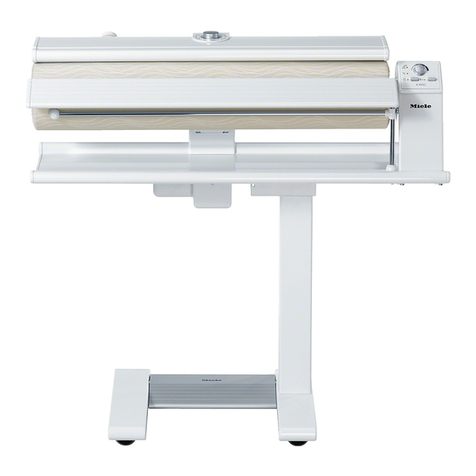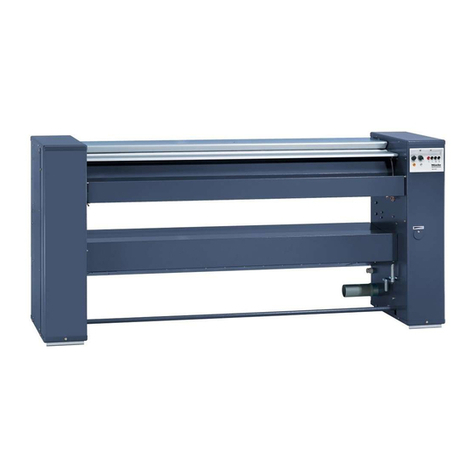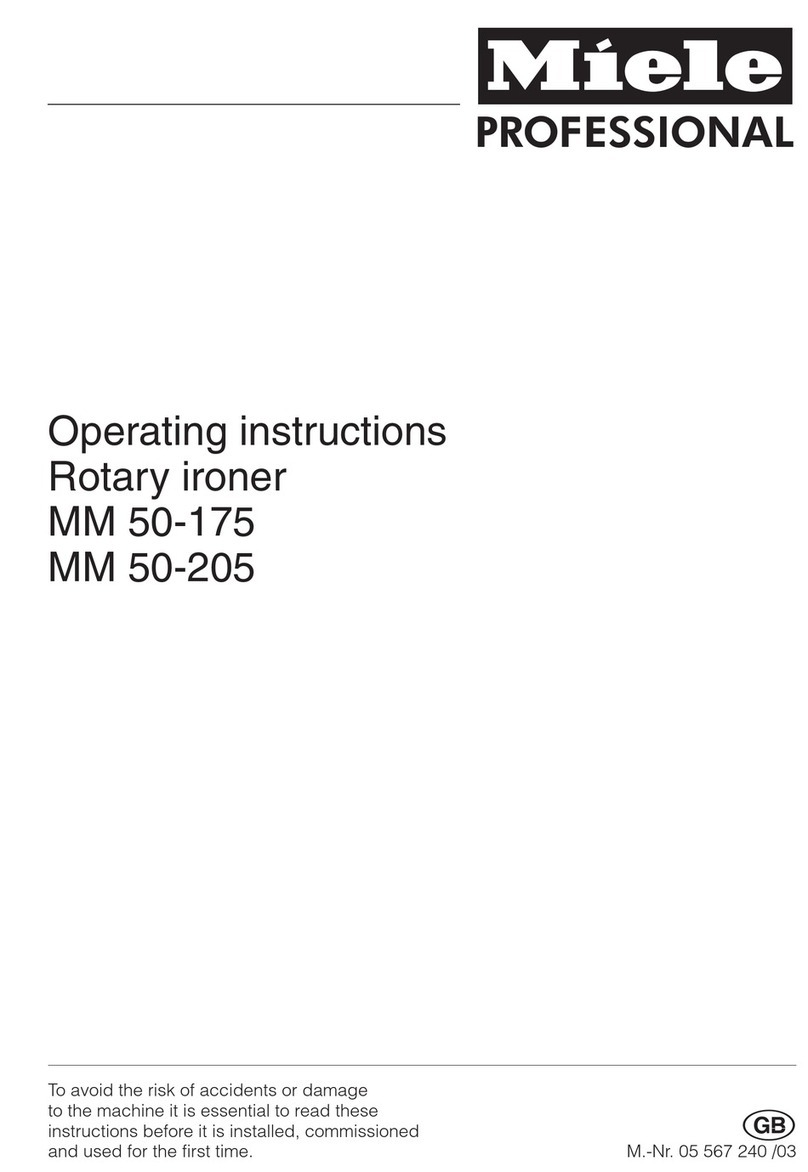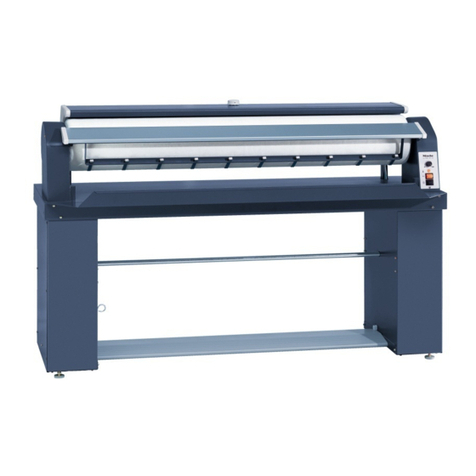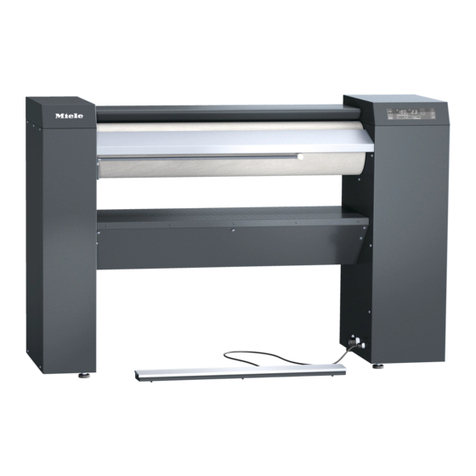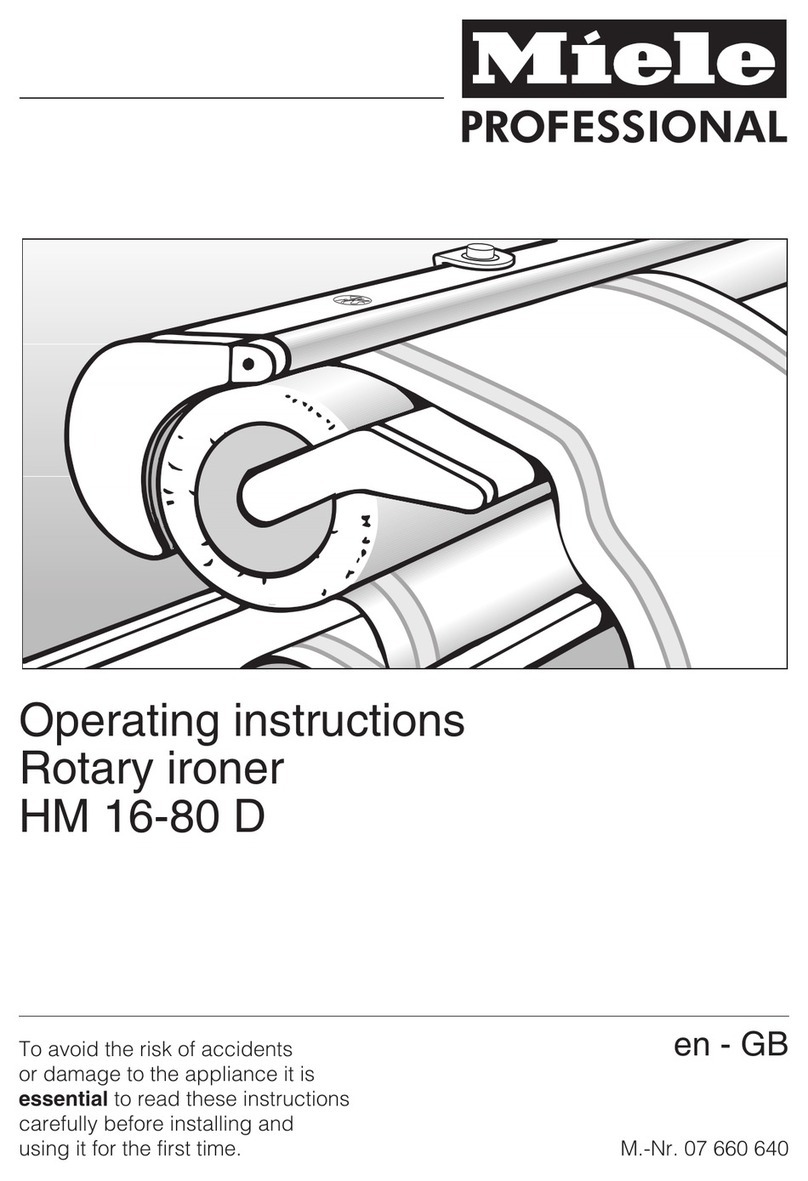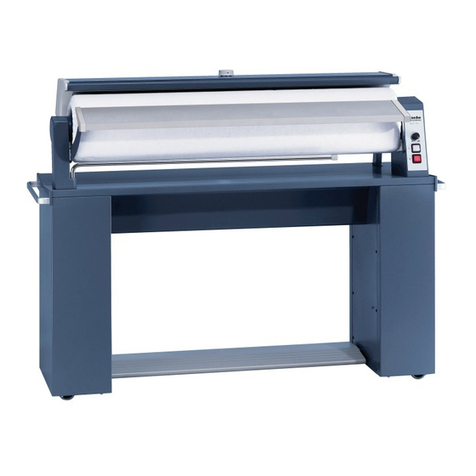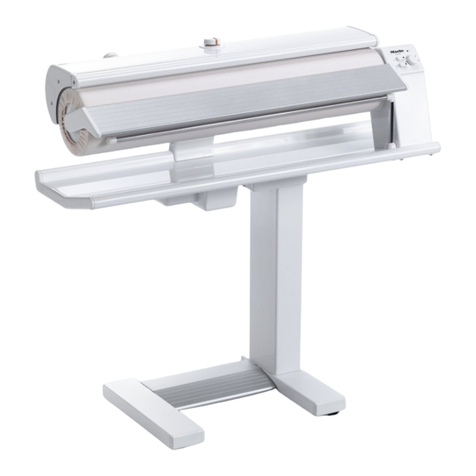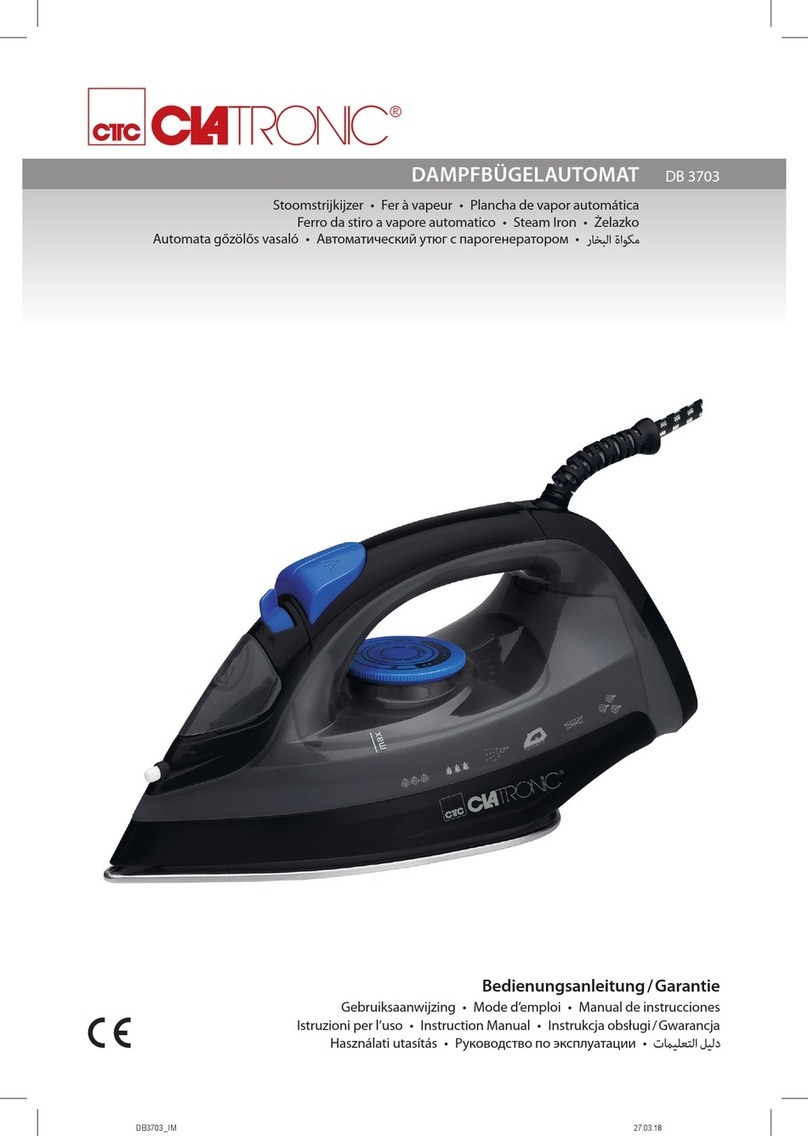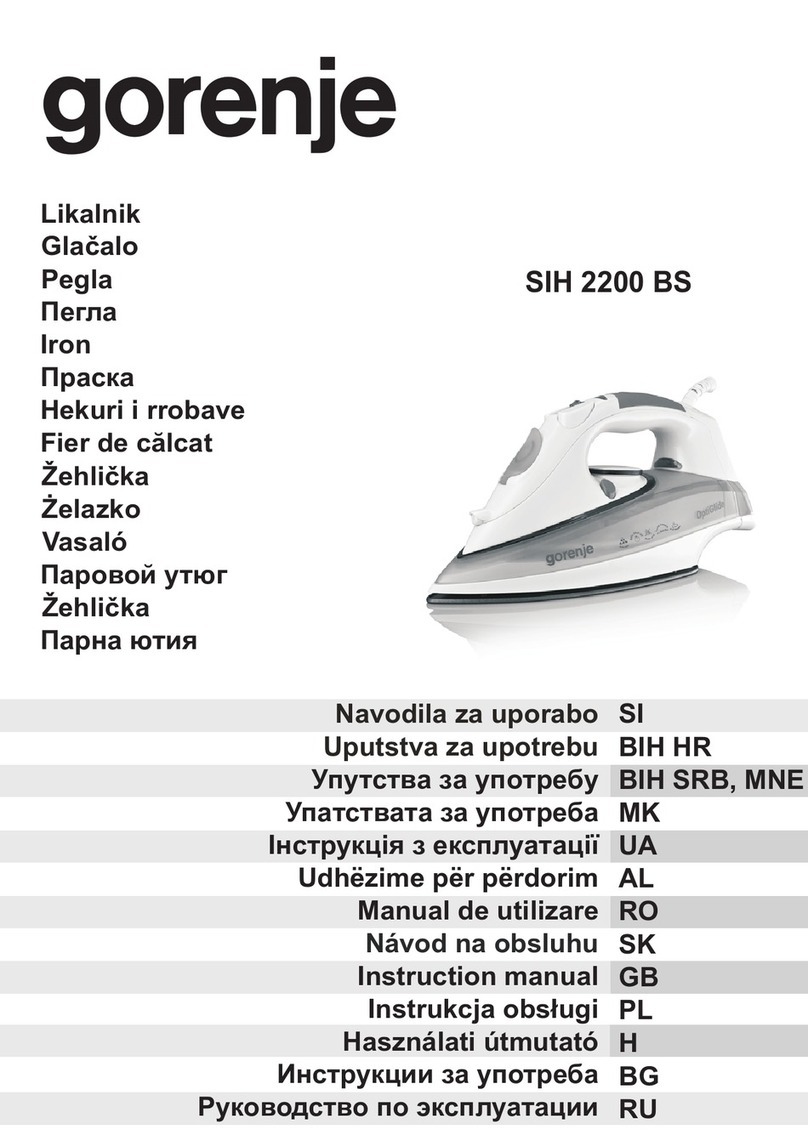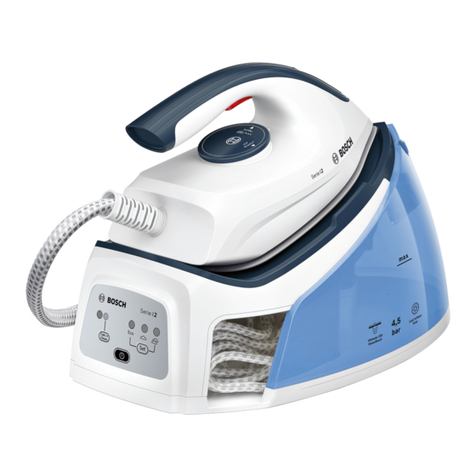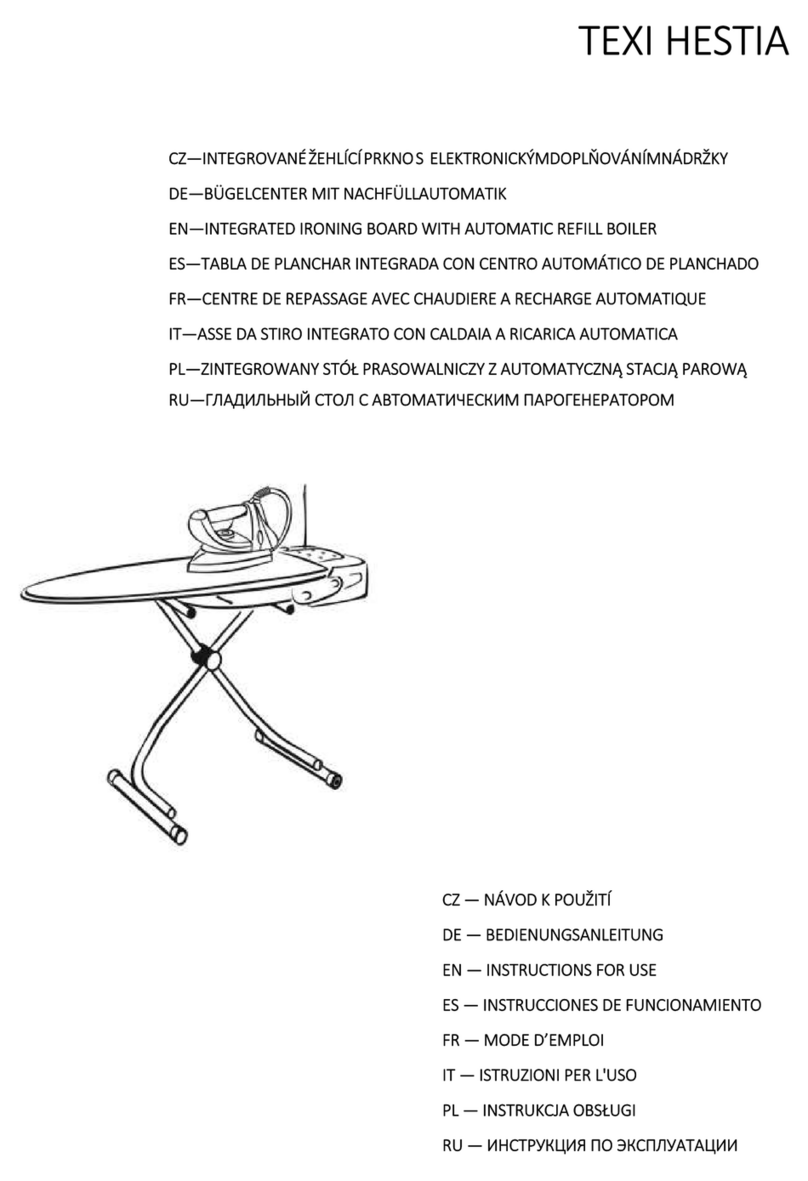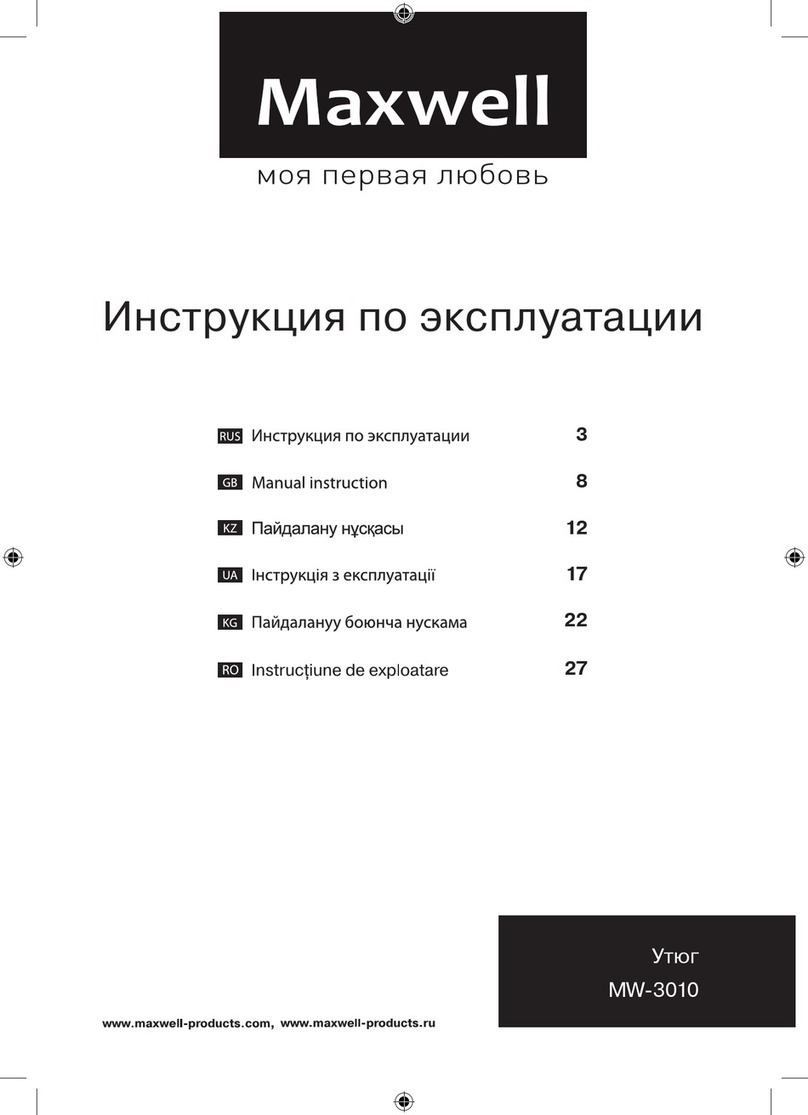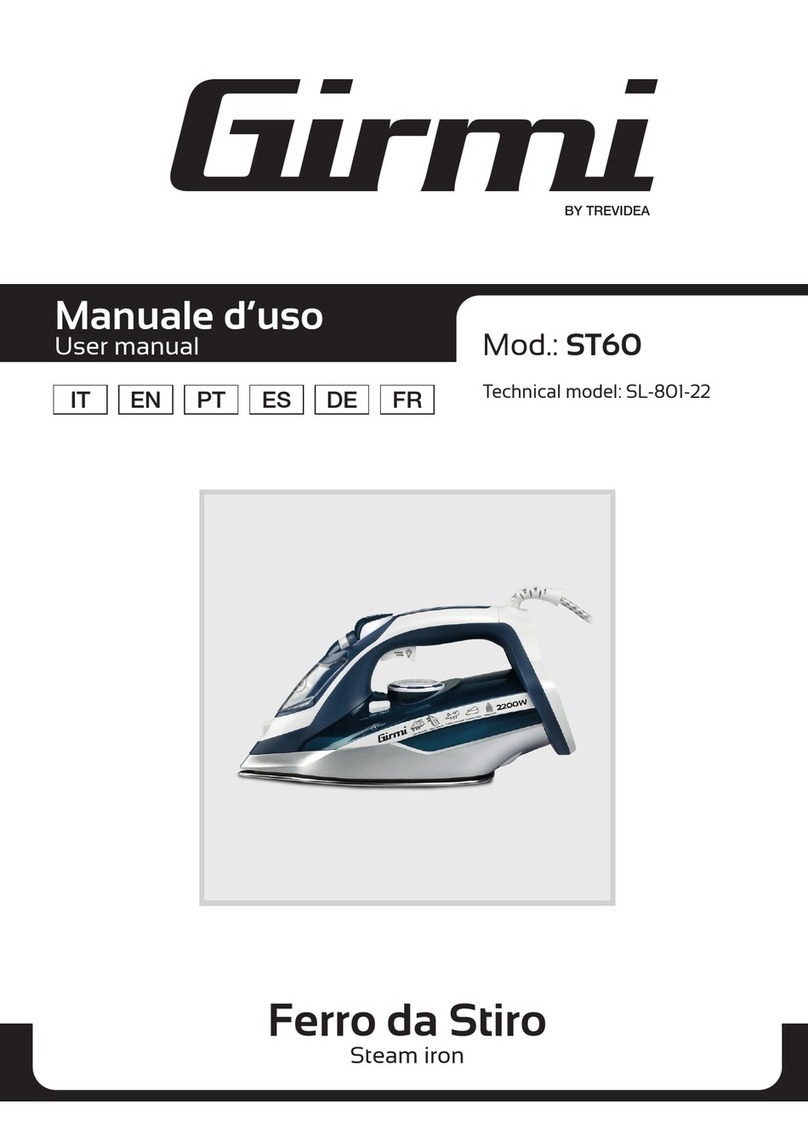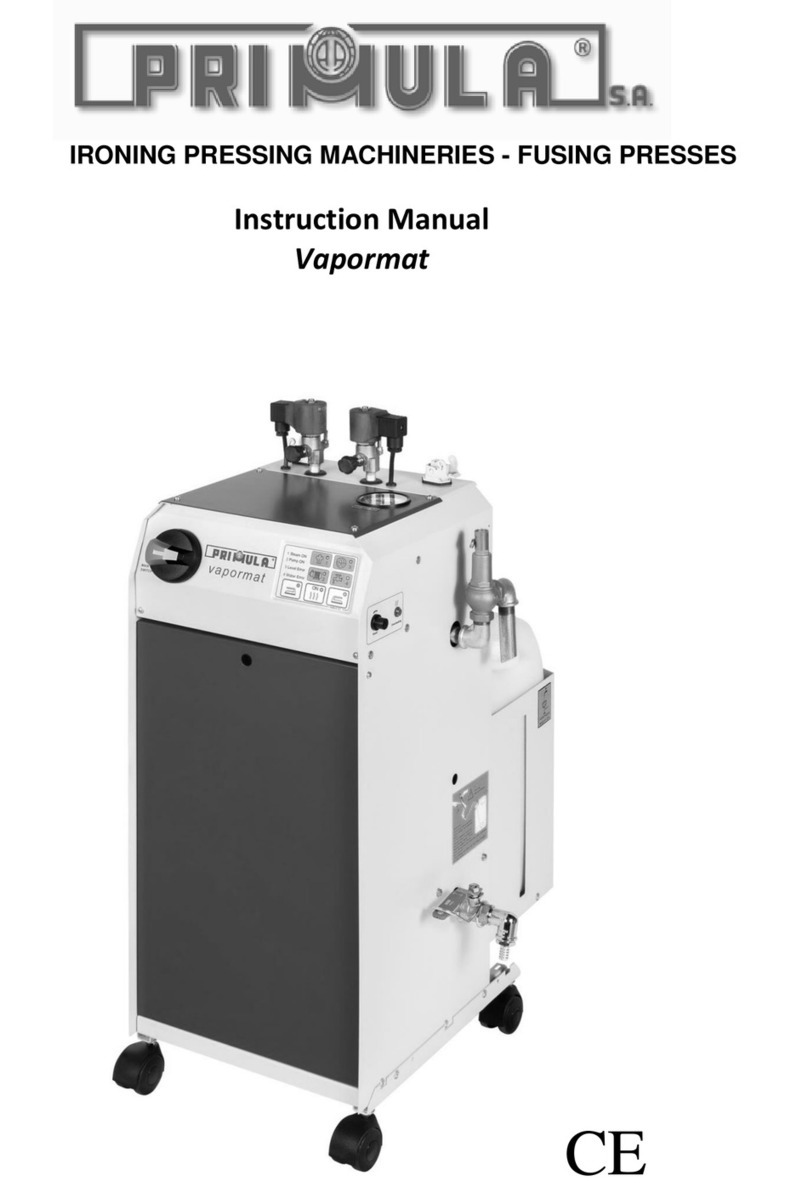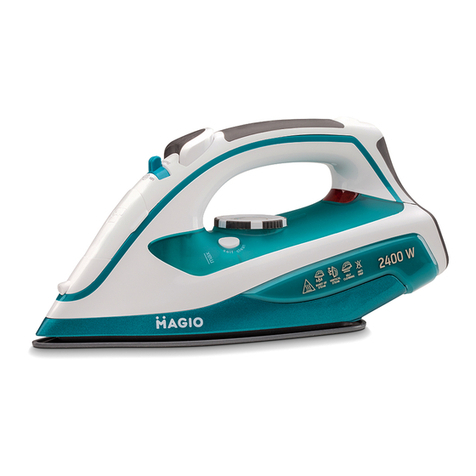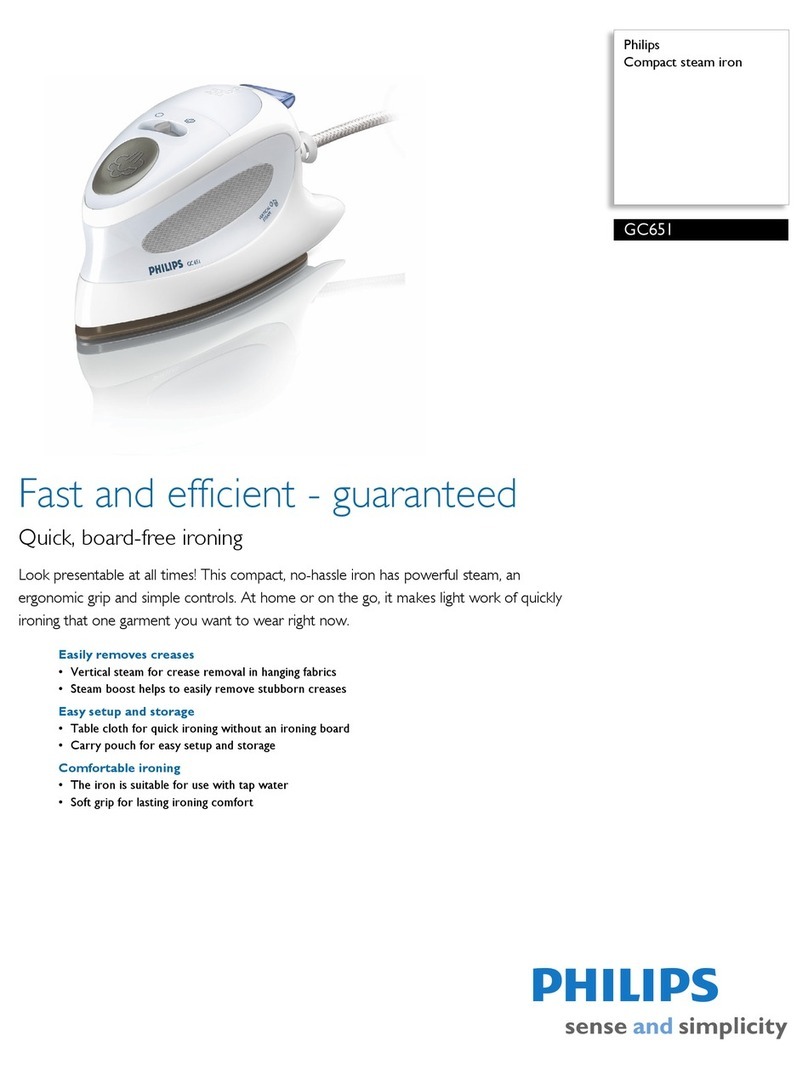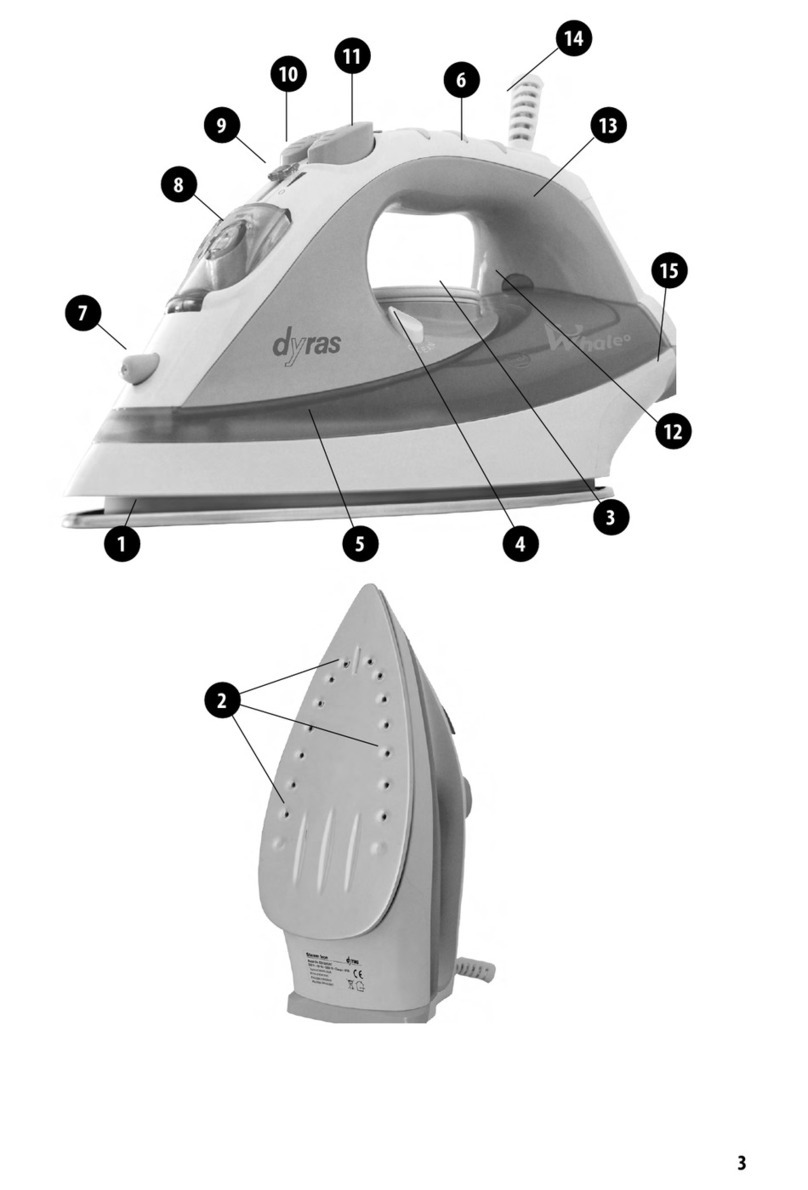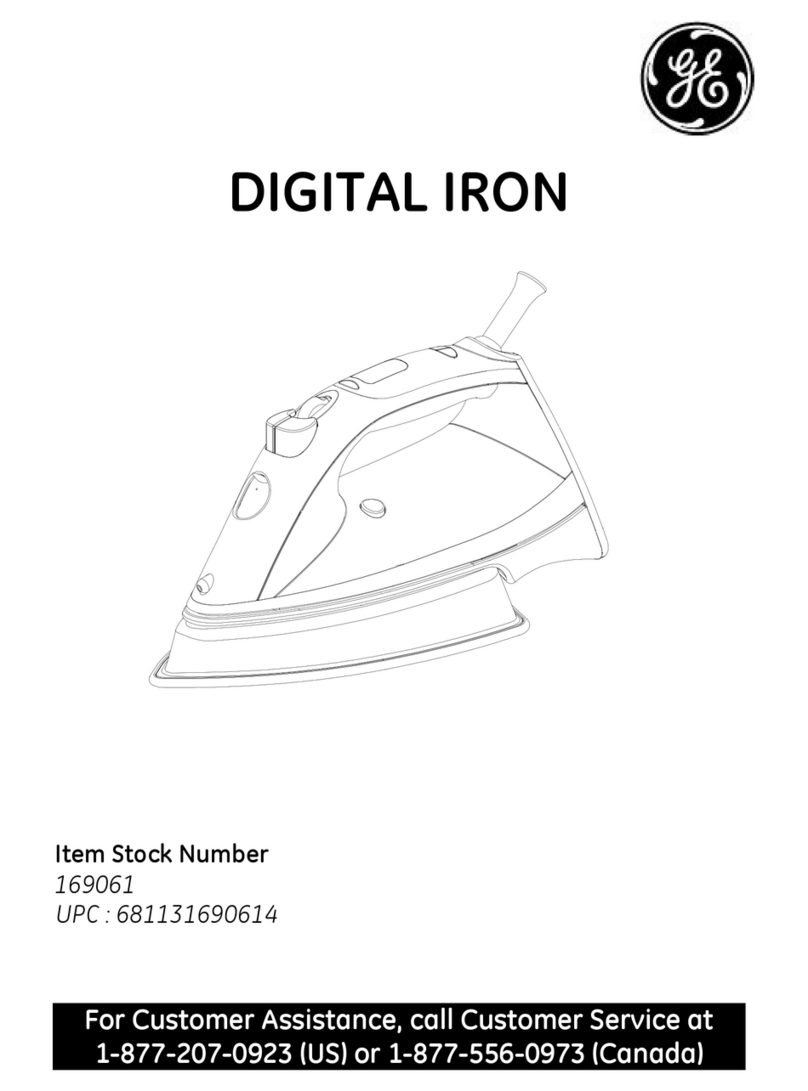To avoid the risk of accidents and
damage to the ironer please read these
instructions carefully before using it for the
first time. They contain important
information on its safety, use and
maintenance.
Keep these instructions in a safe place
and ensure that new users are familiar
with the content. Pass them on to any
future owner.
Correct application
This ironer must only be used for ironing
articles which were washed in water and
which have a care label stating that the
article is suitable for machine ironing.
This ironer is not intended for use by
persons (including children) with
reduced physical, sensory or mental
capabilities, or lack of experience or
knowledge, unless they are supervised
whilst using it or have been shown how to
use it correctly by a person responsible for
their safety.
If the ironer is used in a publically
accessible room, it is the supervisor's
responsibility to ensure that operators are
able to use it safely.
Technical and electrical safety
Before setting up the ironer, check it for
any externally visible damage. Under no
circumstances should you use it if it has
been damaged. A damaged ironer could be
dangerous.
If the connection cable is damaged, it
must be replaced by a Miele approved
service technician.
Before connecting the ironer, ensure that
the connection data on the data plate
(fuse rating, voltage and frequency) match
the mains electricity supply.
If in any doubt, consult a qualified
electrician.
The electrical safety of this ironer can
only be guaranteed when continuity is
complete between it and an effective
earthing system which complies with current
local and national safety regulations. It is
most important that this basic safety
requirement is present and regularly tested,
and where there is any doubt the on-site
wiring system should be inspected by a
qualified electrician. The manufacturer
cannot be held liable for damage or injury
caused by an inadequate earthing system
(e.g. electric shock).
This ironer complies with all relevant
local and national safety requirements.
Unauthorised repairs could result in
unforeseen dangers for the user, for which
Miele cannot accept liability. Repairs should
only be undertaken by a Miele approved
service technician. Ensure current is not
supplied to the ironer until after maintenance
or repair work has been carried out.
Faulty components must only be
replaced by genuine Miele original parts.
The manufacturer can only guarantee the
safety of the appliance when Miele
replacement parts are used.
Warning and Safety instructions
4 M.-Nr. 07 799 370

